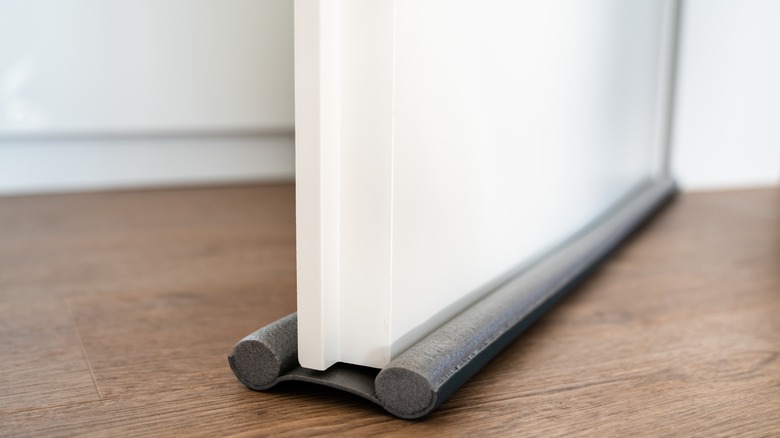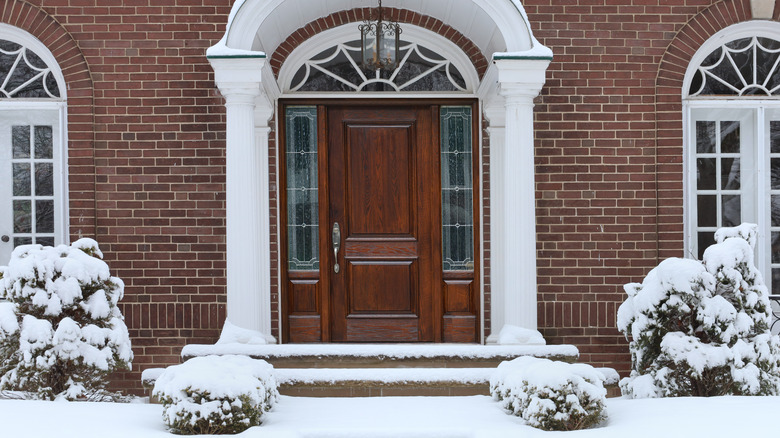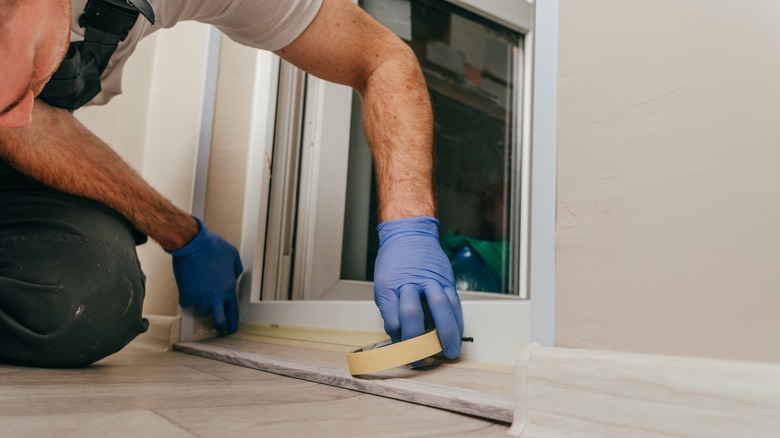Why It's So Important To Seal Your Door Gaps In The Winter
Have you ever looked at your winter energy bill and wondered how heating your home can be so expensive? Unfortunately, even an energy-efficient HVAC system will struggle to heat a home when icy cold air is constantly leaking through the gap under your front door. To make matters worse, a gap under or around your exterior doors can quietly allow moisture to enter your home, which may lead to wood rot and other damage, warns BetterDoor.
There are plenty of ways to diagnose gaps in your home's exterior doors. Perhaps you can see light from under or around your door, or feel an icy draft during the winter months. Either way, door gaps are an incredibly important maintenance issue that most homeowners will want to take care of, especially during the winter. By sealing exterior door gaps, you will not only make your home's desired temperature easier to maintain but reduce the number of bugs in your home while saving money on your monthly energy bill.
Why seal your door gaps
If your home's exterior doors have gaps that let in cold air during the winter, you are probably wasting quite a lot of money every month. In fact, according to the U.S. Department of Energy, weatherstripping a home can save you up to 20% on your monthly energy bill. Door gaps are also one of the main ways small insects can find their way into your kitchen, so if you are always having to deal with ants and stink bugs during warmer months, then winterizing your doors during spring or summer is a great idea.
Thankfully, winterizing your doors isn't exactly a costly or complicated project, so many homeowners will be able to DIY it in a single weekend. That being said, some homeowners will have a trickier time than others. According to Sears Home Services, you might even need to hire a professional to replace your door if you live in a much older house, but most homeowners should be able to weatherstrip their doors without professional assistance.
Ways to seal door gaps
When it comes to winterizing your home's drafty doors, there's usually not a one-step fix that solves all of your problems. According to Rustica, the first step you should consider is tightening your door's hinges to ensure they have not wiggled out of place over time. Next, you'll want to add a door sweep to the bottom of the door. You can find a good door sweep at your favorite hardware store for under $15 dollars, so outfitting your exterior doors shouldn't break the bank.
After you've taken care of these simple steps, it's time to seal your door's gaps and install weatherstrips. According to Rustica, resetting and shimming a door's hinges is the most efficient way to minimize gaps before you start the weatherstripping process. When applying weatherstripping to your door (per Sears Home Services), you should diligently test whether your door still closes during the process to ensure it's a great fit. You can also re-caulk any cracks in your door frame for even more protection against drafts. These simple steps should be enough to dramatically increase your home's temperature and maintain energy efficiency.


